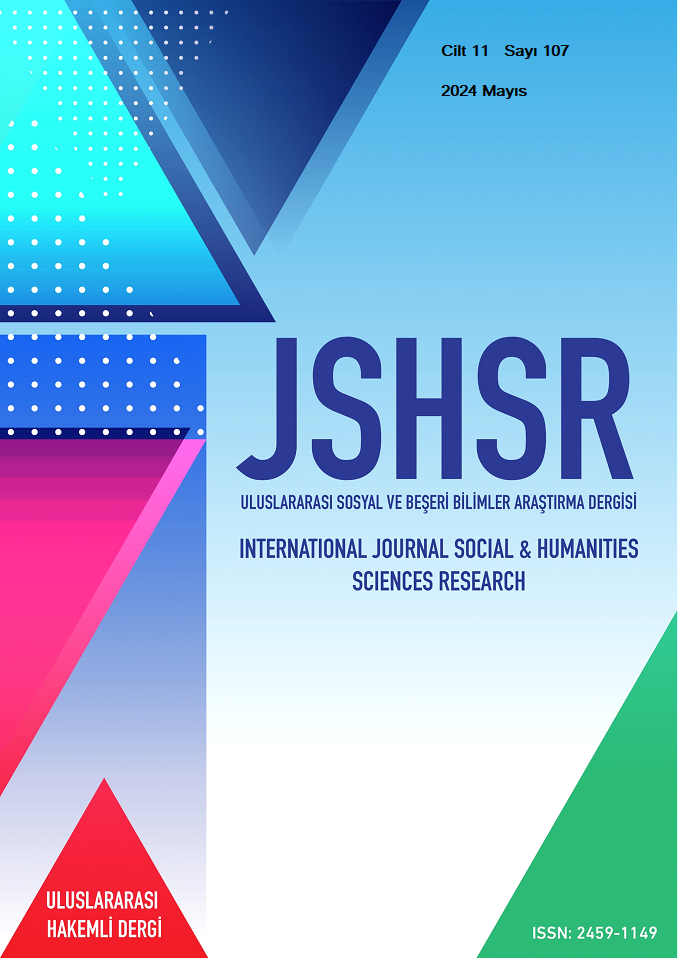Amateur Instrument Education Process in Music Education: Violin Lesson Instance
DOI:
https://doi.org/10.5281/zenodo.11243238Keywords:
Violin, Music Education, Amateur Violin EducationAbstract
The importance of education has always been acknowledged in order to design the future of mankind and the universe. For this reason, new educational approaches and methods are constantly studied. Existing methods and approaches are used to increase success in different branches of education. One of these branches of education is the field of art. A lot of studies have been carried out on art education, where learning and entertainment processes are combined. The effects of art phenomena on the development process of human beings have been emphasized. There are also many studies on the benefits of art education. Differences are observed in the lives of people who are amateurishly interested in any of the branches of art. Especially the interest of young children in music, painting, and drama is included in formal education as a national education policy. With a special interest in music education, individuals tend to receive amateur instrument training. This interest is increasing due to the numerous benefits of playing an instrument and easier access to instruments today. For this reason, there has been an increase in the number of children and individuals receiving amateur instrument training in recent years. In other words, amateur instrument training can be explained as trying to perform an instrument without thinking about any financial gain. This research focuses on the process of amateur instrument education in music education. In addition, the research is quantitative and includes a detailed field on violin lesson ithin the scope of amateur instrument education. The research is aimed at evaluating the situation on the subject and providing suggestions to instructors and students. At the same time, it is aimed at eliminating the shortage of resources.
References
Ataman, G.Ö. ve Güler İ. (2021). Özengen Çalgı Eğitimi Alan Bireylerin Çalgı Çalmayı Öğrenmeye Yönelik Görüşleri (Çanakkale ve Balıkesir Örneği). Kalem Eğitim ve İnsan Bilimleri Dergisi. 11(1), 267-287.
Ayata, E. (2010). Tarihten Günümüze Müzik ve Matematik İlişkisi. Pearson Journal of Social Science & Humanities. 5(9), 62-73.
Ayata, E.- Aşkın, C. (2010). Müziğin Beynin Bilişsel Fonksiyonlarına Olan Etkisi. İstanbul Teknik Üniversitesi Sosyal Bilimler Dergisi, 5(2), 13-22.
Brody, Z. S. (2016). “Suzuki Yetenek Eğitimi” Felsefesine Kısa Bir Bakış. Anadolu Üniversitesi Sanat ve Tasarım Dergisi, 6(1), 79-88.
Eskioğlu, I. (2003). Müzik Eğitiminin Çocuk Gelişimi Üzerindeki Etkileri. Cumhuriyetimizin 80. Yılında Müzik Sempozyumu, 30-31 Ekim 2003, İnönü Üniversitesi, Malatya, 116-123.
Fenmen, M. (1991). Müzikçinin Elkitabı. Müzik Ansiklopedisi Yayınları.
Türkmen, U. (2010). Çocuğun Bireysel Toplumsal ve Kültürel Gelişiminde Amatör Müzik Eğitiminin Yeri Problemleri ve Çözüm Önerileri. İlköğretim Online, 9(3), 960-970.
Öz, N. B. (2001). İnsanın Kültürel Gelişiminde Müzik Eğitiminin Önemi. Uludağ Üniversitesi Eğitim Fakültesi Dergisi, 14(1), 101-106.
Uyan, Z. D. (2018). Özengen Müzik Eğitimi Alma Durumu ile Akademik Başarı Arasındaki İlişkiler. Ekev Akademi Dergisi, 22 (76), 235-244.
http1. http://www.rafaelvideira.com/the-suzukireg-method.html
Downloads
Published
How to Cite
Issue
Section
License
Copyright (c) 2024 INTERNATIONAL JOURNAL OF SOCIAL HUMANITIES SCIENCES RESEARCH

This work is licensed under a Creative Commons Attribution 4.0 International License.


